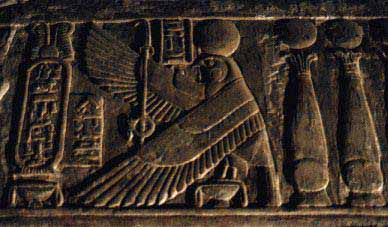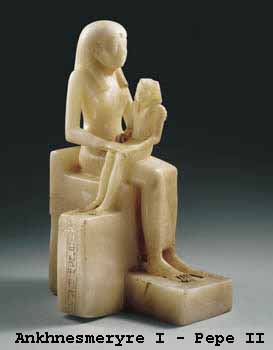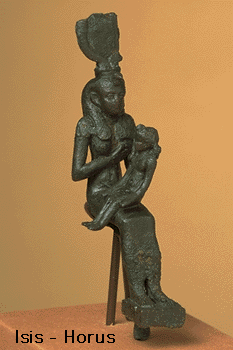Horus - He Who is Above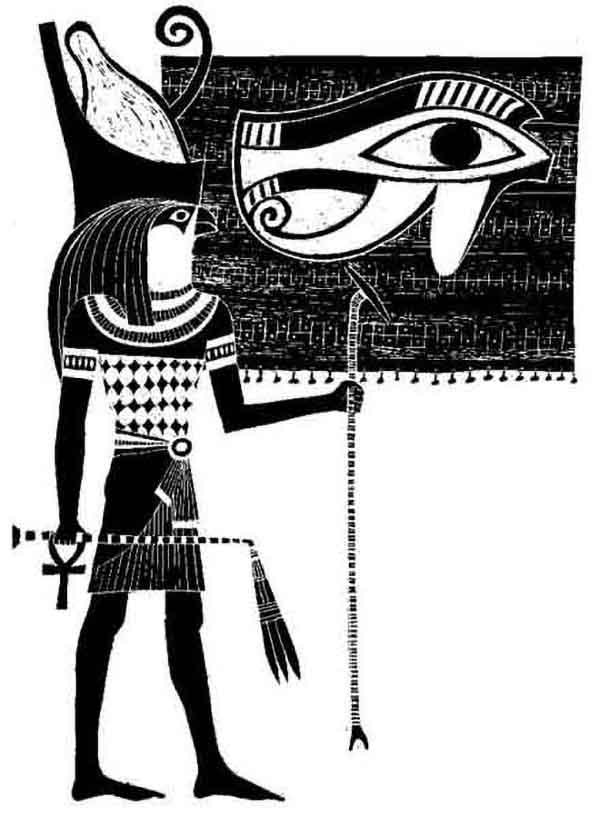
The falcon-headed Sky God
Horus is the god of the sky, and the son of Osiris, the creator (whoseown birth was thought due to the Ogdoad). Horus became depicted as afalcon, or as a falcon-headed man, leading to Horus' name, (inEgyptian, Heru), which meant The distant one. Horus was also sometimesknown as Nekheny (meaning falcon), although it has been proposed thatNekheny may have been another falcon-god, worshipped at Nekhen (city ofthe hawk), that became identified as Horus very early on. In this form,he was sometimes given the title Kemwer, meaning (the) great black(one), referring to the bird's color.
Identities
- Mekhenti-irry (He who has on his brow Two Eyes) - the sun andmoon representing his eyes, on nights when there is no moon. In thisform he was considered the god of the blind.
- Haroeris (Horus the Elder) An early form of Horus - God of light. Hiseyes represented the sun and moon. He was the brother of Osiris andSeth. Sometimes he was the son, or the husband of Hathor.
- Horus Behudety In the form of Horus of Edfu, he representedthe midday sun. This Horus was worshipped in the western Delta andlater, as his cult spread south into Upper Egypt, a cult center wasestablished in Edfu. Horus of Edfu fights a great battle against Sethand an army of conspirators. He is pictured as a winged sun-disk or asa hawk headed lion.
- Ra-Harakhte (Horus of the two horizons) - He was identifiedwith Ra and the daily voyage of the sun from horizon to horizon. Thetwo deities combined to become Ra-Harakhte. He was represented as afalcon or a falcon-headed man wearing the solar disk and double crownor the uraeus and the atef crown.
- Harmakhet (Horus in the Horizon) In this form he representedthe rising sun and was associated with Khepri. He was also consideredto be the keeper of wisdom. He was sometimes pictured as a man with afalcon's head, or a falcon headed lion. But his most recognizable formis that of a sphinx, or as a ram-headed sphinx.
- Harsiesis (Horus son of Isis) This Horus was the son of Isisand Osiris. He was conceived magically after the death of Osiris andbrought up by Isis on a floating island in the marshes of Buto. Thechild was weak and in constant danger from the scheming of his wickeduncle Seth, who sent serpents andmonsters to attack him. But hismother, Isis was great in themagical arts and she warded off this evilby using a spellagainst creatures biting with their mouths and stingingwiththeir tails, and the young Horus survived and grew.
- Harendotes (Horus the avenger of his father)
- Har-pa-Neb-Taui (Horus Lord of the Two Lands)
- Harpokrates (The infant Horus) As a child he represented thenew born sun and was often pictured being suckled by Isis. he wasusually represented as a seated child, sucking his thumb, his head wasshaved except for the sidelock of youth. Even as a child, he wore theroyal crown and uraeus
As Horus was the son of Osiris, and god of the sky, he becameclosely associated with the Pharaoh of Upper Egypt (where Horus wasworshipped), and became their patron. The association with the Pharaohbrought with it the idea that he was the son of Isis, in her originalform, who was regarded as a deification of the Queen.
It was said that after the world was created, Horus landed on aperch, known as the djeba, which literally translates as finger, inorder to rest, which consequently became considered sacred. On someoccasions, Horus was referred to as lord of the djeba (i.e. lord of theperch or lord of the finger), a form in which he was especiallyworshipped at Buto, known as Djebauti, meaning (ones) of the djeba (thereason for the plural is not understood, and may just have been aresult of Epenthesis, or Paragoge). The form of Djebauti eventuallybecame depicted as an heron, nevertheless continuing to rest on thesacred perch.
Just as a precaution: a great deal of the following informationis incorrect. For example, Isis has always been Horus' mother and neverhis wife. Osiris has always been Horus' father and Horus is not bothHorus and Osiris. The relation between the story of Jesus and the storyof Horus is the fact that Horus' story is the story of the REAL firstimmaculate conception.
The story goes as follows: Seth (brother of Osiris) was jealous ofOsiris and fought him to the death. After he killed Osiris he cut hisbody up into 14 pieces and spread the pieces throughout Egypt. Isis(Osiris' wife) found out that her husband was killed and she searchedegypt looking for his body parts. She found all but one (his penis) andusing her magic she put his body together and buried him, during theprocess of putting him back together she became impregnated with herson Horus. She gave birth to Horus who became the god of the sky andlater avenged his fathers death by killing his uncle Seth.
Sun God
Since Horus was said to be the sky, it was natural that he wasrapidly considered to also contain the sun and moon. It became saidthat the sun was one of his eyes and the moon the other, and that theytraversed the sky when he, a falcon, flew across it. Thus he becameknown as Harmerty - Horus of two eyes.
Later, the reason that the moon was not as bright as the sun wasexplained by a tale, known as the contestings of Horus and Set,originating as a metaphor for the conquest of Lower Egypt by UpperEgypt in about 3000BC. In this tale, it was said that Set, the patronof Lower Egypt, and Horus, the patron of Upper Egypt, had battled forEgypt brutally, with neither side victorious, until eventually the godssided with Horus.
As Horus was the ultimate victor he became known as Harsiesis(Heru-ur, and Har-Wer, in Egyptian), meaning Horus the Great, but moreusually translated as Horus the Elder. Meanwhile, in the struggle, Sethad lost a testicle, explaining why the desert, which Set representedis infertile.
Horus' right eye had also been gouged out, which explained why themoon, which it represented, was so weak compared to the sun. It wasalso said that during a new-moon, Horus had become blinded and wastitled Mekhenty-er-irty (he who has no eyes), while when the moonbecame visible again, he was re-titled Khenty-irty (he who has eyes).
While blind, it was considered that Horus was quite dangerous, sometimes attacking his friends after mistaking them for enemies.
Ultimately, as another sun god, Horus became identified with Ra asRa-Herakhty, literally Ra, who is Horus of the two horizons. However,this identification proved to be awkward, for it made Ra the son ofHathor, and therefore a created being rather than the creator.
And, even worse, it made Ra into Horus, who was the son of Ra, i.e. itmade Ra his own son and father, in a standard sexually-reproductivemanner, an idea that would not be considered comprehensible until thehellenic era. Consequently Ra and Horus never completely merged into asingle falcon-headed sun god.
Nevertheless the idea of making the identification persisted,and Ra continued to be depicted as falcon-headed. Likewise, asRa-Herakhty, in an allusion to the Ogdoad creation myth, Horus wasoccasionally shown in art as a naked boy, with a finger in his mouth,sitting on a lotus with his mother.
In the form of a youth, Horus was referred to as Neferhor(also spelt Nefer Hor, Nephoros, and Nopheros), which, in the Egyptianlanguage, means beautiful Horus (i.e. youthful Horus).In an attempt toresolve the conflict, Ra-Herakhty was occasionally said to be marriedto Iusaaset, which was technically his own shadow, having previouslybeen Atum's shadow, before Atum was identified as Ra, in the formAtum-Ra, and thus of Ra-Herakhty when Ra was also identified as a formof Horus.
In the version of the Ogdoad creation myth used by the Thoth cult,Thoth created Ra-Herakhty, via an egg, and so was said to be the fatherof Neferhor.
Conqueror of Set
During the overthrow of the hated Hyksos, foreign rulers overEgypt, Set became demonised by the nationalistic fervour, as he hadbeen chosen by the Hyksos as their favourite god. The previous briefenmity between Set and Horus, in which Horus had ripped off one ofSet's testicles, was revitalised as a tale representing the conquestover the Hyksos. Since by this time, Set was considered to have beengay, Set is depicted as trying to prove his dominance, by seducingHorus (with the line how lovely your backside is) and then havingintercrural intercourse with him, in which Set takes the top role.However, Horus places his hand between his thighs and catches Set'ssemen, then subsequently cut the hand off, throwing it in the river, sothat he may not be said to have been inseminated by Set.
Subsequently, Horus secretly masturbates, and deliberatelyspreads his own semen on some lettuce, which was Set's favourite food(the Egyptians thought that lettuce was phallic, since Egyptian lettucewas hard, long, and released a milk substance when rubbed). After Sethas eaten the lettuce, they go to the gods to try to settle theargument over the rule of Egypt. The gods first listen to Set's claimof dominance over Horus, and call his semen forth, but it answers fromthe river, invalidating his claim. Then, the gods listen to Horus'claim of having dominated Set, and call his semen forth, and it answersfrom inside Set. In consequence, Horus is declared the ruler of Egypt.
Brother of Isis
When Ra assimilated Atum into Atum-Ra, Horus became consideredpart of what had been the Ennead. Since Atum had had no wife, havingproduced his children by masturbating, Hathor was easily inserted asthe mother of the previously motherless subsequent generation ofchildren.
However, Horus did not fit in so easily, since if he was identified asthe son of Hathor and Atum-Ra, in the Ennead, he would then be thebrother of the primordial air and moisture, and the uncle of the skyand earth, between which there was initially nothing, which was notvery consistent with him being the sun.
Instead, he was made the brother of Osiris, Isis, Set, andNephthys, as this was the only plausible level at which he couldmeaningfully rule over the sun, and over the Pharaoh's kingdom. It wasin this form that he was worshipped at Behdet as Har-Behedti (alsoabbreviated Bebti).
Since Horus had become more and more identified with the sun,since his identification as Ra, his identification as also the moonsuffered, so it was possible for the rise of other moon gods, withoutcomplicating the system of belief too much. Consequently, Chons becamethe moon god.
Thoth, who had also been the moon god, became much more associated withsecondary mythological aspects of the moon, such as wisdom, healing,and peace making. When the cult of Thoth arose in power, Thoth wasretroactively inserted into the earlier myths, making Thoth the onewhose magic caused Set and Horus' semen to respond, in the tale of thecontestings of Set and Horus, for example.
Thoth's priests went on to explain how it was that there were 5children of Geb and Nuit. They said that Thoth had prophecied the birthof a great king of the gods, and so Ra, afraid of being usurped, hadcursed Nuit with not being able to give birth at any point in the year.
In order to remove this curse, Thoth proceeded to gamble with Chons,winning 1/72nd of moonlight from him. Prior to this time in Egyptianhistory, the calendar had had 360 days, and so 1/72 of moonlight eachday corresponded to 5 extra days, and so the tale states that Nuit wasable to give birth on each of these extra days, having 5 children.
The Egyptian calendar was reformed around this time, and gained the 5extra days, which, by coincidence, meant that this could be used toexplain the 5 children of Nuit.
Son of Osiris
When Isis became identified as Hathor (i.e. Isis-Hathor), Isisbecame the mother of Horus, rather than his wife, and so, in his place,as Isis had become regarded as one of the Ennead, she was seen as thewife of Osiris. However, it had to be explained how Osiris, who as godof the dead, was dead, could be considered a father to Horus who wasvery much not considered dead. This led to the evolution of the ideathat Osiris needed to be resurrected, and so to the Legend of Osirisand Isis, a myth so significant that everything else paled incomparison.
As the son of Isis, Horus was referred to as Har-sa-Iset(Harsiesis in Greek), literally meaning Horus, son of Isis. There werealso titles that differentiated between this form of Horus as an adult,and him as a child, specifically, Harpocrates (Har-Pa-Khered inEgyptian), meaning Horus the child, and Har-nedj-itef, meaning Horus,saviour of his father, i.e. a reference to Horus' actions against Setonce Horus had become an adult.
Since he had been the son of Hathor, a fertility goddess, theidea that a major event about Horus was when he was a child, Horussometimes depicted as a fertility god, holding a cornucopia, althoughit was much more common for him to be shown as being nursed by Isis(more accurately Isis-Hathor, who was depicted as Isis, but withHathor's horns).
In the New Kingdom, Anhur, a war god, gained the title Saviour,due to the feelings of the benefits of going to war to assert your ownfreedom, and so he became conflated with Horus, who shared both thesecharacteristics, as the warrior against Set, with the title Saviour ofhis father.
The identification of Anhur as Horus, referred to as Horus-Anhur, wasgiven a new name during the Egyptian period of dominance over Nubia,when the kushites named him as Arensnuphis (also Arsnuphis,Harensnuphis), Ari-hes-nefer in Egyptian, meaning something along thelines of Horus of the beautiful house.In a certain few areas, Horus wasidentified as the son of Banebdjed, who was an obscure version ofOsiris, technically his Ba, worshipped in Mendes, and consequently alsothe son of Hatmehit, the local chief goddess of Mendes who had becomeconsidered Osiris' wife.
Horus became very popular during the time of the Roman Empire, in hisform as a child, where he was depicted riding a goose or ram (symbolsof Thoth and Banebdjed respectively).Since Horus was sometimesidentified as Ra, Isis assimilated the mythos of Neith, Ra's mother.
Consequently, Horus sometimes took on the aspects of the tale that Raexhibited, to have been the son of Neith, who remained a virgin, as aresult of Kneph's creative act of breathing Horus' life into her via anankh. Kneph was connected to the Ba, and became identified withBanebdjed, both being depicted as ram-headed, and consequently thistale became viewed as Osiris, the most important god (at this time),causing Isis to become pregnant, while she still remained a virgin, bybreathing Horus' soul into her.
Mystery Religion
Since Horus, as the son of Osiris, was only in existence afterOsiris's death, and because Horus, in his earlier guise, was thehusband of Isis, the difference between Horus and Osiris blurred, andso, after a few centuries, it came to be said that Horus was theresurrected form of Osiris. Likewise, as the form of Horus before hisdeath and resurrection, Osiris, who had already become considered aform of creator when belief about Osiris assimilated that aboutPtah-Seker, also became considered to be the only creator, since Horushad gained these aspects of Ra.
Eventually, in the Hellenic period, Horus was, in somelocations, identified completely as Osiris, and became his own father,since this concept was not so disturbing to Greek philosophy as it hadbeen to that of ancient Egypt.
In this form, Horus was sometimes known as Heru-sema-tawy, meaningHorus, uniter of two lands, since Horus ruled over the land of thedead, and that of the living. Since the tale became one of Horus' owndeath and rebirth, which happened partly due to his own actions, hebecame a life-death-rebirth deity.
In the time of Christ the term "son of god" had come to meanthe bearer of this title was the father god himself as well as his ownson incarnated on earth. Horus was Osiris the father who incarnated asHorus the son.By assimilating Hathor, who had herself assimilated Bata,who was associated with music, and in particular the sistrum, Isis waslikewise thought of in some areas in the same manner.
This particularly happened amongst the groups who thought of Horus ashis own father, and so Horus, in the form of the son, amongst thesegroups often became known as Ihy (alternately: Ihi, Ehi, Ahi, Ihu),meaning sistrum player, which allowed the confusion between the fatherand son to be side-stepped.
The combination of this, now rather esoteric mythology, withthe philosophy of Plato, which was becoming popular on themediterranean shores, lead to the tale becoming the basis of a mysteryreligion.
Many Greeks, and those of other nations, who encountered the faith,thought it so profound that they sought to create their own, modelledupon it, but using their own gods. This lead to the creation of whatwas effectively one religion, which was, in many places, adjusted tosuperficially reflect the local mythology although it substantiallyadjusted them.
The religion is known to modern scholars as that of Osiris-Dionysus.
Horus and Jesus
A connection between Jesus and Horus-Osiris is frequently raised bycritics of the historicity of Jesus, who argue that he was a mythicalfigure (see Jesus-Myth). Superficially, the death and resurrection ofHorus-Osiris, and Horus' nature as both the son of Osiris and Osirishimself, appear to be a template for the idea that this occurred inJesus.
Deeper similarities between Horus and Jesus, which are not atall obvious to those who are not completely familiar with ancientEgyptian mythology and linguistics, have been said by some to mean thatcertain elements of the story of Jesus were embellishments, which werecopied from the Horus as syncretism. Indeed, according to a few moreradical scholars, Jesus was copied from Horus wholesale, and made intoa Jewish teacher. In particular, it is said that Horus is the basis forthe elements assigned to the M Gospel (the bits in Matthew which arenot in the Q Gospel or Mark) and the L Gospel (the bits in Luke whichare not in the Q gospel or Mark), especially the infancy narratives.
Neith's nativity
The nativity sequence itself stands out for comparison with thenativity of Ra, whose mother became thought of as Neith, who had becomethe personification of the primal waters of the Ogdoad. As the primalwaters, from which Ra arose due to the interaction of the ogdoad, Neithwas considered to have given birth whilst remaining a virgin. As thevarious religious groups gained and lost power in Egypt, the legendaltered, and, when the cult of Thoth sought to involve themselves inthe story, it was said that Thoth's wisdom (which he personified) meantthat he foretold the birth of Ra to Neith. Since the later legends hadother gods in existence at Ra's birth, it was said that theyacknowledged Ra's authority by praising him at his birth.
Later, the tale evolved so that the god Kneph was present, whorepresented the breath of life, which brought new life to things. Thiswas partly to do with the assertion, of the small cult of Kneph, thatKneph was the creator, although it was more accurate to say that Knephwas the personification of the concept of creation of life itself. As acreator, Kneph became identified as the more dominant creator deityAmun, and when Amun became Amun-Ra, so Kneph gained Hathor as a wife.
Many of the features look similar to the nativity of Jesus atfirst glance, such as the continued virginity, lack of father,annunciation, birth of god, and so forth, but others do not. There ismuch that is more subtle. Although many deities, and indeed people,were referred to as beloved, it was a title which was most frequentlyapplied to Neith, indeed it became something of an alternative name.The word used, in this context, for beloved, is Mery in Egyptian.
Meanwhile, Kneph was said by Plutarch to have been understoodby the Egyptians in the same way as the Greeks understood pneuma,meaning spirit, and so it was that Neith became pregnant by the actionsof the holy spirit, like Mary does in the Christian story.
Thoth himself was identified by the Greeks, due to his association withhealing, as Hermes, and consequently, in the hellenic era, Thoth wasconsidered the messenger of the gods. This role was taken by theArchangel Michael in Jewish thought, and so if the Christians copiedthe tale, it would have been Michael, not Gabriel, who made theannunciation to Mary.
Much criticism of this similarity is leveled at the fact thatNeith is a goddess, and not a human mother. However, Pharaohs oftenattributed tales of divinity to themselves, and their families, and sodivine birth stories for themselves were common. Nethertheless, thetale was essentially about Neith rather than the queens of pharaohs,until that is, Amenhotep III applied it to his wife and the birth ofhis son, whom was consequently identified as Horus, as after theamalgamation of the gods Ra and Horus, the tale became one of Horustoo. The significance of Amenhotep making the identification is boththat it became a tale of the birth of Akhenaten, who left such animpression that, as the gods evolved further, the tale becameremembered as being one of the birth from a human mother of a humanson, who was nevertheless divine.
References and Links
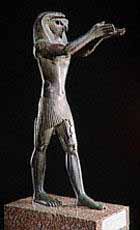
Abydos: Complete cemetery to the falcon-shaped god Horus
February 4, 2002
Supreme Council of Antiquities (SCA) mission in Abydos, Sohagunearthed an important cemetery of god Horus, one of the ancientEgyptian trinity that comprises Osiris and Isis, and dates back to thePtolemaic era, said archaeologist Sabri Abdel Aziz, director of UpperEgypt antiquities department.
This is the first time a complete cemetery of the falcon shaped godHorus, who was worshipped in the area of Abydos for a long time, isunearthed, he said. The find includes tombs in which big ovalearthenware sarcophagi were found with linen-wrapped embalmed falconsinside them, some of which had gold-plated dark green and black maskscovering the heads.
"A number of intact falcon eggs were also found, in addition to atreasure trove outside the tombs representing a scarab pushing one ofthese eggs forward as told by the ancient Egyptian legend of creation,"he said.
Traces of gold were found on the remains of human skeletons gatheredhaphazardly and also on the skulls, teeth, fingers and toes as well asan incomplete bronze statuette of god Horus in the sitting position, agroup of amulets, bronze vessels and a god hat-hor-shaped pestlepreviously restored with lead, he noted.
Horus - Hours - Time - Time and SynchronicityPyramids Above and Below create the hourglass
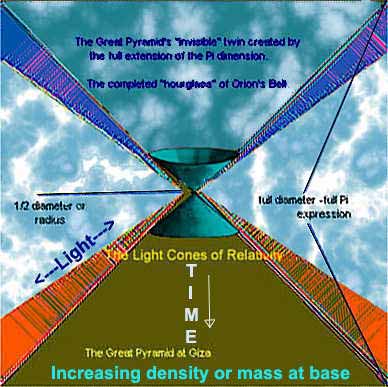
in the Sands of Time
Thoth Thought Consciousness
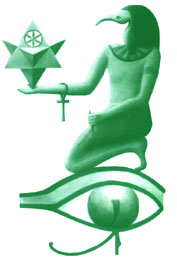
Emerald Tablets of Thoth
Hermes Trismegistus
Sacred Geometry
Alchemy
Thoth and Horus are the same soul - bird headed gods - metaphors for 'flight'
spiraling evolution of consciousness through the alchemy of time.
Eye of God - Eye of Re - Eye of Horus Isis = 'I' = Eye = Sirius
The Eye of Horus / Re / God refers to the ancient Mystery SchoolTeachings of Creational Geometry encoded by Isis and Osiris and leftbehind with their priests in Egypt. These are the same souls who arethe priests in Atlantis and other programs. They carry this geneticallyencoded information in their DNA - triggered now as we move back to2012 (see below). There is addtional information kept hidden in theancient mystery school teachings since the beginning of thisreality/program. All hidden information will come forward at this time,as the Hall of Records - Golden Capstone was activated on December 12 -12:12 at 12:12 am and pm in the Kings Chamber of the Great Pyramid. Thecalibration for the time clock of our reality was reset andconsciousness shifted.
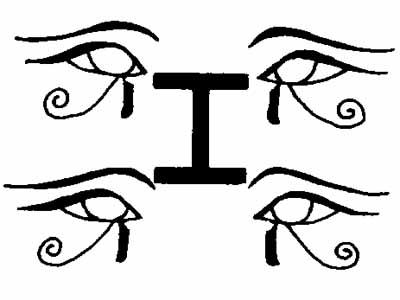
Merging of the self - Right/Left Brain - The Eye - 'I'
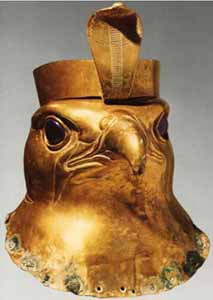
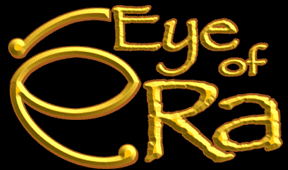
Golden Alchemy - Evolution of Consciousness in Time
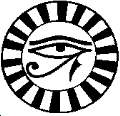
12 around 1
12X3=36=9=endings
Stargate and Sacred Geometry
Metaphor - Opening of hidden knowledge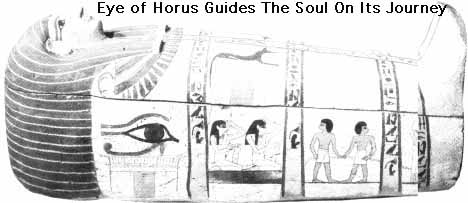
in which the secrets of creation are buried.
Eye of Re / Horus links with the Sumerian Gods
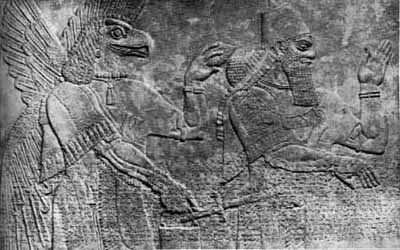
which goes to Nibiru
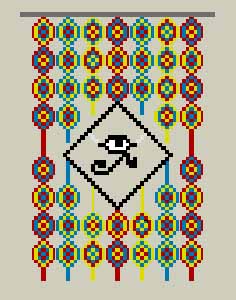
additional strands of DNA merge.
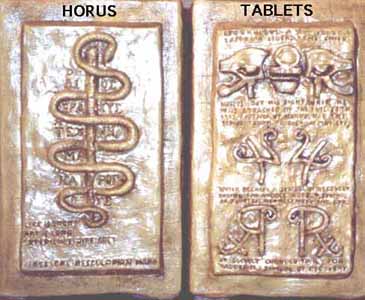
Kom Ombo 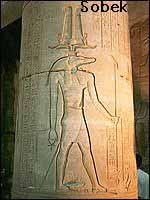
Kom Omb is the only 'double temple' from ancient Egypt. So namedbecause it combines two architectural styles: modern by ancient Egypt'sstandards, as well as representing two different gods simultaneously.It combines the Ptolemaic and the Roman period to commemorate thecrocodile god Sobek, and the hawk god Horus. There is a main axis alongwhich the two temples were symmetrically built. The layout of both ofthese temples was similar in design to the Temple of Hathor, at Dendara.
